Tips for Hiking in the Rain
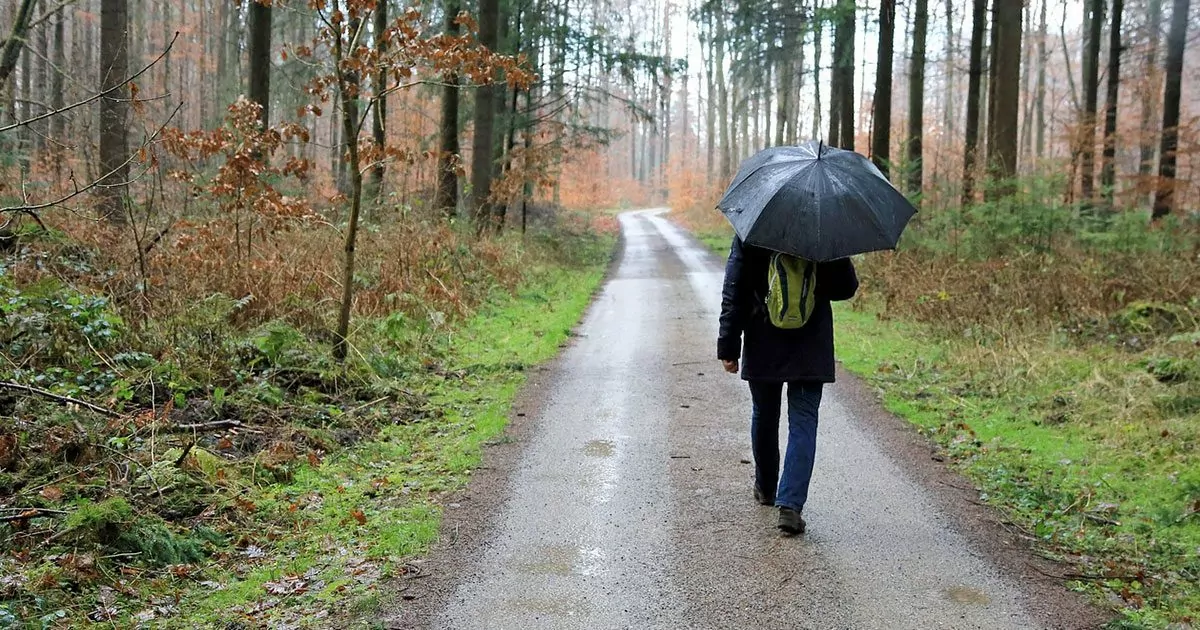
We’ve all been there. Out for a lovely hike and enjoying the views, then, the rain clouds roll in. But you don’t need to panic. Hiking in rain certainly isn’t the end of the world. There are plenty of tips, tricks, and methods to make sure your experience is still an enjoyable one.
It’s for exactly that reason that we’ve put all those bits of advice in one place, and created your definitive guide on how to hike in the rain. We’ll cover your early preparation. Then, we’ll move on to gear selection and trail safety. And finally, we’ll bring it all home with properly drying and caring for your gear. Let’s get started!
Before You Go
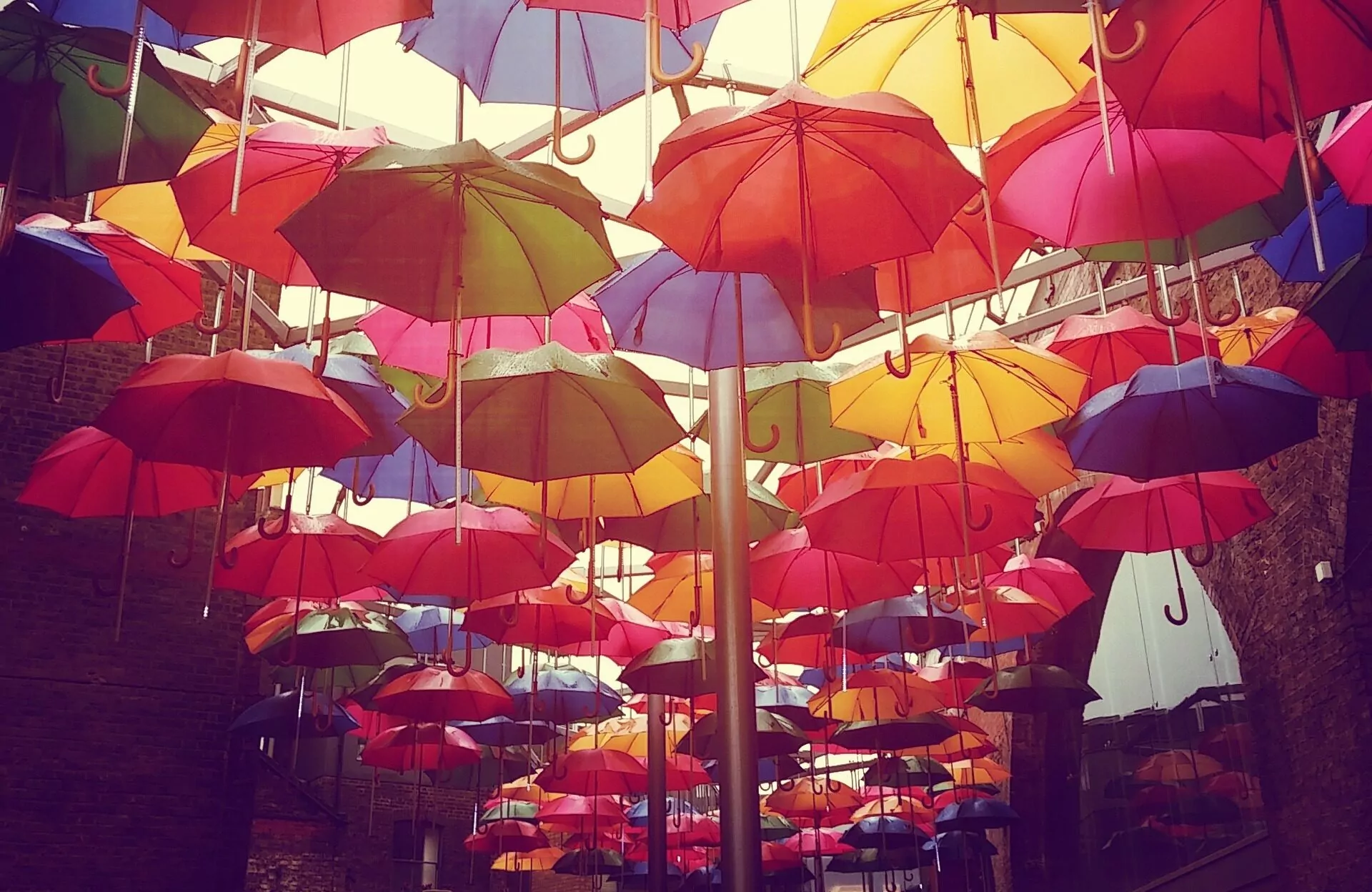
Check The Weather
Knowledge is power they say, and this certainly holds true in the realm of hiking in rain. Knowing that some wet weather is in the offing, or is even remotely possible, is your first step in preparing for it. That way, you won’t be caught off-guard. If you’re preparing to go out for any sort of hike, be it for a single day or several, take a few minutes to run an eye over the forecast.
One of my top weather resources is the forecast provided by the National Oceanic And Atmospheric Administration.
Let Friends Know
Hiking in rain can be a potentially hazardous undertaking. The weather is harsher, the hiking trails unpredictable, and the chance of even more severe weather is higher. It is, therefore, very important to let folks know where you’re going and when you expect to return. Simply stated, you just never know; having a friend that knows your whereabouts can literally save the day.
Just remember to drop those same people a message when you return to keep the alarm from being raised. A simple text message will help you avoid an awkward phone call with drenched park rangers who were out searching for you.
Prepare Snacks And Drinks
Nothing can be more reviving in the cold rain than a timely hot drink; be it hot apple cider, coffee, or your classic hot chocolate. Therefore do yourself a tremendous favor and have your favorite beverage on hand.
If you’re going out on a day-hike, you can prepare a thermos ahead of time and either take it with you on the trail or have it waiting in the car. Backpackers heading out for several days should simply make sure to pack the drink mixes of choice, a mug, and additional fuel if you foresee several extra pots of hot water in your future.
Waterproof The Essentials
Phone, cash, GPS, headphones, book, and toilet paper. What do all these things have in common? Well, they are all often included in a hiking pack AND do not mix well with rain.
Avoid the mad scramble to find plastic bags on the trail: ensure that these items are packed securely where rain won’t reach them. This could be a snazzy waterproof stuff sack, or your basic ziploc bag. Both work equally well for this application. Heed this advice and your essential pieces of equipment bone dry in the face of any downpour.
Prep Your Gear
Just as you should waterproof your essential items, you should also prepare the rest of your gear for a little rain.
- Make sure that your raincoat and pants are easily accessible without digging through your bag.
- Any extra warm layers should be kept in a plastic bag to keep them nice and dry.
- Food and snack items that don’t mix with water – think crackers and sandwiches – should be securely packaged
This brings us to the point: just what type of gear do you need for a potentially rainy day? Read on and find out.
Cut Out All This Prep With A Guide
If all this preparation for rain is cutting into your enjoyment, consider joining a guided hike with Wildland! This is a stress-free, exciting way to enjoy your trip. The tour company handles permits, gear, transportation, meals, and provides a professional guide so you can focus 100% on enjoying your adventure. Read more…
Explore Your World. Award Winning Hiking Guides
Recommended Gear
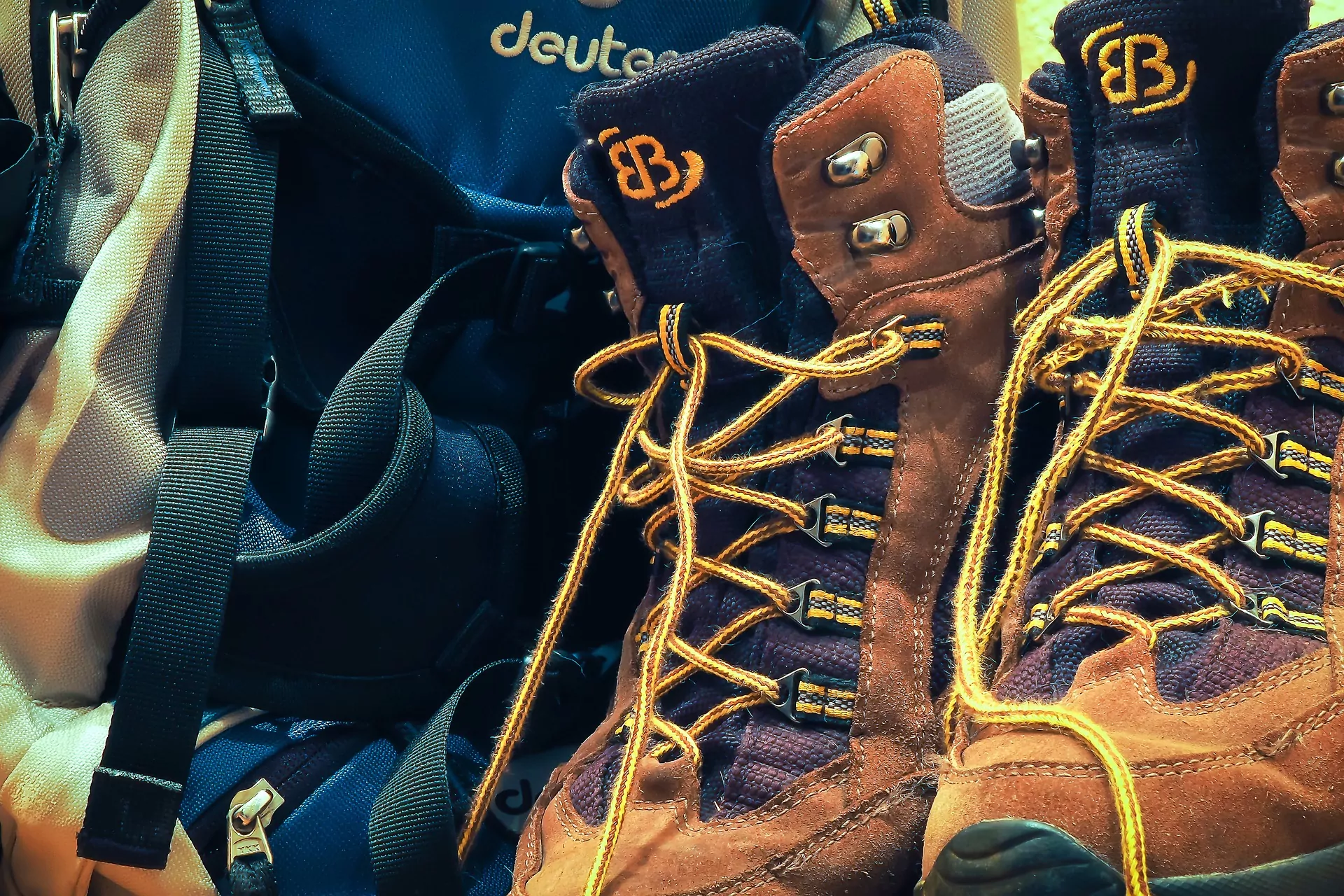
Hiking in rain requires just a little bit more gear preparation than your standard outdoor excursion. We’ll therefore take a few minutes to cover the essential items that any rainy adventure requires. If you need a little bit more guidance on packing for a hike in general, review our packing lists (in PDF trip packets guest receive when they register) that cover every region where Wildland Trekking operates.
Waterproof Jacket And Pants
You typically have two choices when hiking in rain: either embrace the rain and just get soaked (which can be a lot of fun on a hot day hike I might add), or, the more popular option, bring the rain gear and stay as dry as possible.
The pillars of this rainproof system are the jacket and pants. They are typically your first line of defense against rain on the trail. It is therefore worth the effort to make sure both are made of quality materials that hold up to moisture and last many seasons!
GoreTex is typically the household name in rain gear as it has a proven track record of keeping water at bay, yet remaining somewhat breathable. However, many gear manufacturers have developed their own proprietary waterproofing technologies, which also typically work very well. Our best advice is to look out for brands with a proven track record in quality gear. Think Marmot, The North Face, Columbia, Mountain Hardwear, and similar manufacturers.
Bag Liners
The majority of hiking backpacks, especially multi-day backpacking bags, are water-resistant but not waterproof. This means that the pack may ward off a little sprinkle, but will crumble in the face of sustained rain for the better part of the day.
So first things first: check your bag! If it’s definitely waterproof, you’re good to go. However, if you see the words weather-resistant, or water-resistant, then you should plan on an extra layer of defense.
That defense takes form as a bag liner. This is simply a light waterproof bag that you slip into your backpack before you load all your gear in. Then, you place your items inside this bag as you pack up. Think a bag within a bag. Your standard heavy-duty trash bag works perfectly for this application.
This adds a layer of waterproofing to your packing system so even if your primary backpack gets soaked, your items stay nice and dry.
Footwear
As with your rain jacket and pants, you have two options for your footwear. Option one: a light and very breathable pair of shoes that lets the water drain out, and dries quickly. Or a full-on waterproof pair that will try to keep the water out as long as possible.
Everyone has their own preference in this department, but here’s my guiding principle: if you’re looking at intermittent rain here and there, then waterproof footwear should hold up nicely and keep you dry.
If, on the other hand, there’s nothing but incessant rain in your immediate future, then you should consider light breathable shoes/boots. In this type of weather, you simply have to expect the rain to eventually find its way into your shoes, despite your best efforts. The light and breathable shoes/boots are therefore a viable option as they will air out quickly and not retain water for a sloshy hike –both of which waterproof shoes cannot provide.
Hiking Poles
Rain = slippery. So you should plan accordingly and incorporate a hiking pole or two into your adventure repertoire. They will keep you stable on loose ground, test suspect steps, and save your bacon if you do happen to lose your balance. And when those trolls come out, how else are you going to trip the person running next to you?
Extra Clothes
One of our top suggestions for staying comfortable during a rainy hike is to pack some extra clothes. Slipping into a cozy dry fleece does a world of good for your well-being. Or, better yet, some warm and fuzzy socks!
If you’re heading out for a day-hike, keep these items stashed in your car. They’ll be ready and waiting for you when you get back. If you’re braving the weather for a multi-day backpacking trip, however, stash these items in your bag liner or additional waterproof bags to make sure they’re dry when the time comes.
Towels In The Car
Take it from me: climbing into your car sopping wet after adventurously hiking in rain and having a long drive home staring you in the face is a recipe for an uncomfortable few hours. So, in addition to stashing dry clothes in your car ahead of time, have a big dry towel on standby. This will keep you from soaking your car seat, and provide more fuzzy comfort after the rain.
Don’t Have Most Of This Gear?
No worries at all! Wildland Trekking will provide the vast majority of your gear when you join one of our guided hiking excursions. This includes bag liners, hiking poles, and delicious meals. All you need are your clothes and shoes. The tour company also handles all your permits, transportation, meals, and provides a professional guide so you can focus 100% on enjoying your adventure. Read more…
All Inclusive Backpacking Trips
On The Trail
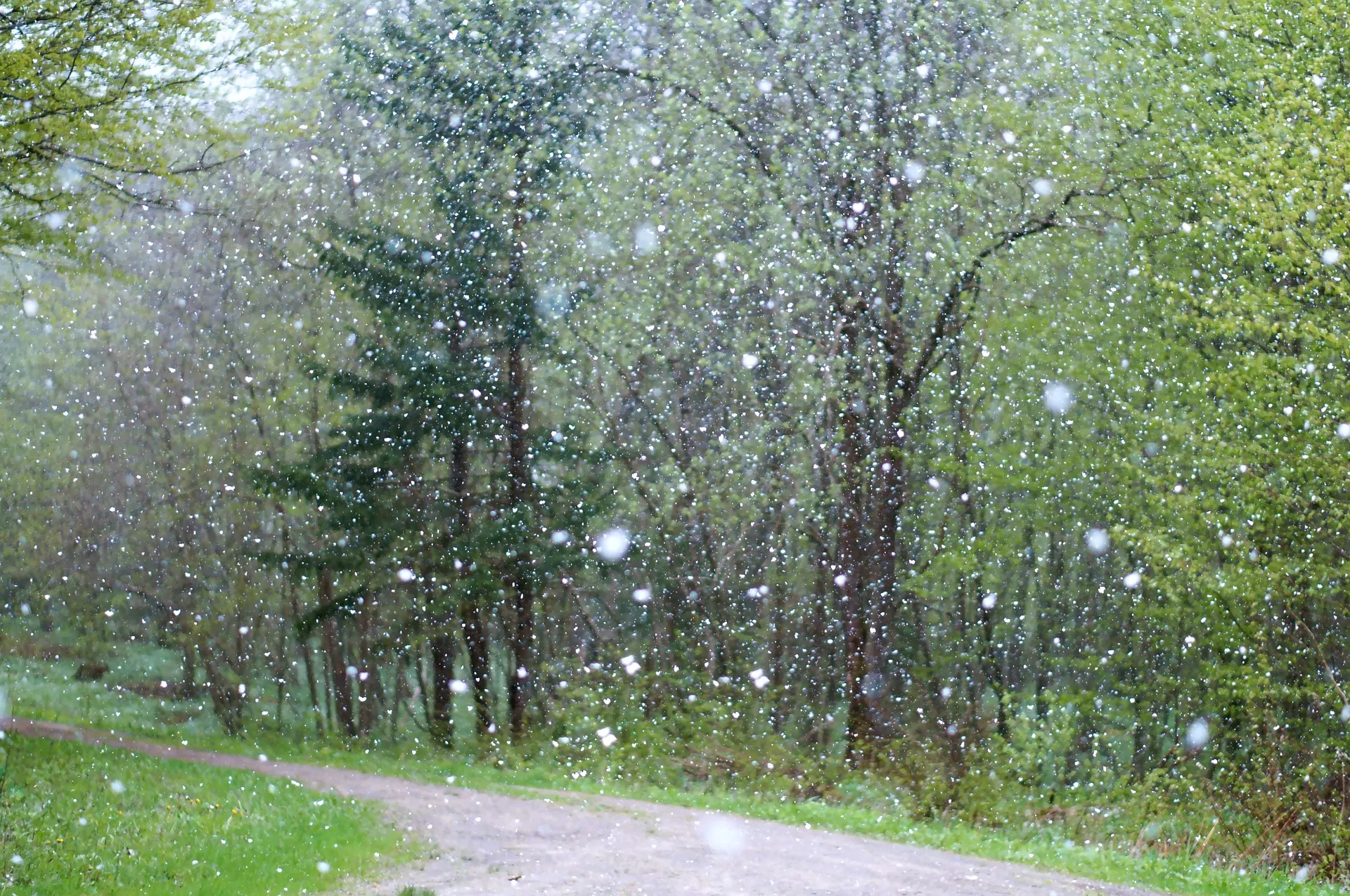
Hiking in rain is a whole different beast compared to hiking in pristine conditions. Let’s take a few minutes to go over the differences to keep you safe and prepared for whatever the nasty weather has in store.
Wet Trail Safety
If it’s wet, assume it’s slippery. Let this be your motto for your entire hike. Wooden staircase embedded in the trail? It’s probably slippery. Have to step up or down some rocks? Still slippery. Old creek crossing made of wood or downed trees? Those are probably slicker than a banana peel on top of a wet bar of soap.
My point is, be careful! Take your time and remember that adding a few minutes to your hike out of an overabundance of caution is preferable to trying to hike out with a twisted ankle (believe me).
Lightning Safety
It can always be worse. This is my self-administered moral booster when hiking in rain. However, do you have a plan if it actually does get worse?
Worst-case scenario, this little rain squall could swell into a thunder and lightning storm. First of all, your best line of defense is to stay up-to-date on the forecast and stay inside if this is a possibility. But weather is naturally unpredictable and stuff happens. So you’re out hiking and you hear thunder, what do you do?
Remember that lightning/electricity will always take the path of least resistance. Meaning that lightning is very lazy and strikes targets that are closest to the storm. Think mountain tops, ridges, and tall trees. Your best option is to head to lower elevation as soon as it looks like lightning may be forthcoming. Get off mountains, get below treelines while avoiding the tallest trees, and avoid wide open fields and meadows.
Have A Map
Now I know a map is recommended for any hike at any time. But please please make sure you have a good map if you’re hiking in rain. This applies even if you’ve hiked the trail before!
Trails look different when inundated with water. Drainage ways make false trail junctions, trail edges and pathways are less defined, and we are simply more distracted when trying to stay dry.
So take an extra few minutes to ensure you have a current map of your hiking trail. If you’re heading out into a national park, the park service always has maps available online. State park ranger stations generally have maps on hand as well.
Creek And River Crossing Safety
With heavy rainfall comes higher creek and river levels. You may be unpleasantly surprised to find what was once a lazy dribbling creek last time has transformed into a whirling waterway. So once again hikers, be safe and have a plan.
Many water crossings have an established crossing point with several large rocks, branches, or both, lined up for you to cross. If they’re still above the water, they’re certainly an option. But remember our first point in this section, they’re probably very slick. Hiking poles anyone?
Perhaps the water has risen to the point where the standard crossing point is below the surface, or maybe that option is too slick to cross safely. In that case, consider this. It’s raining and you’re wet along with a fair amount of your gear. Would it therefore be the end of the world to slip off your shoes, put on some flip-flops, and cross that water intrepidly straight through?
But perhaps your shoes are already wet, or you forgot an alternative. In that case I’d recommend simply walking straight through without adding the potentially hazardous activity of hopping from rock to slippery rock. This is another situation where opting for a non-waterproof hiking shoe/boot that drains water quickly is beneficial.
Let A Guide Worry About It
Every single Wildland Trekking adventure is led by at least one of our professional and knowledgable guides. These guides will do their utmost to ensure a safe and fun trip and allow you to focus 100% on enjoying your adventure. Read more…
Backpacking Specific Advice
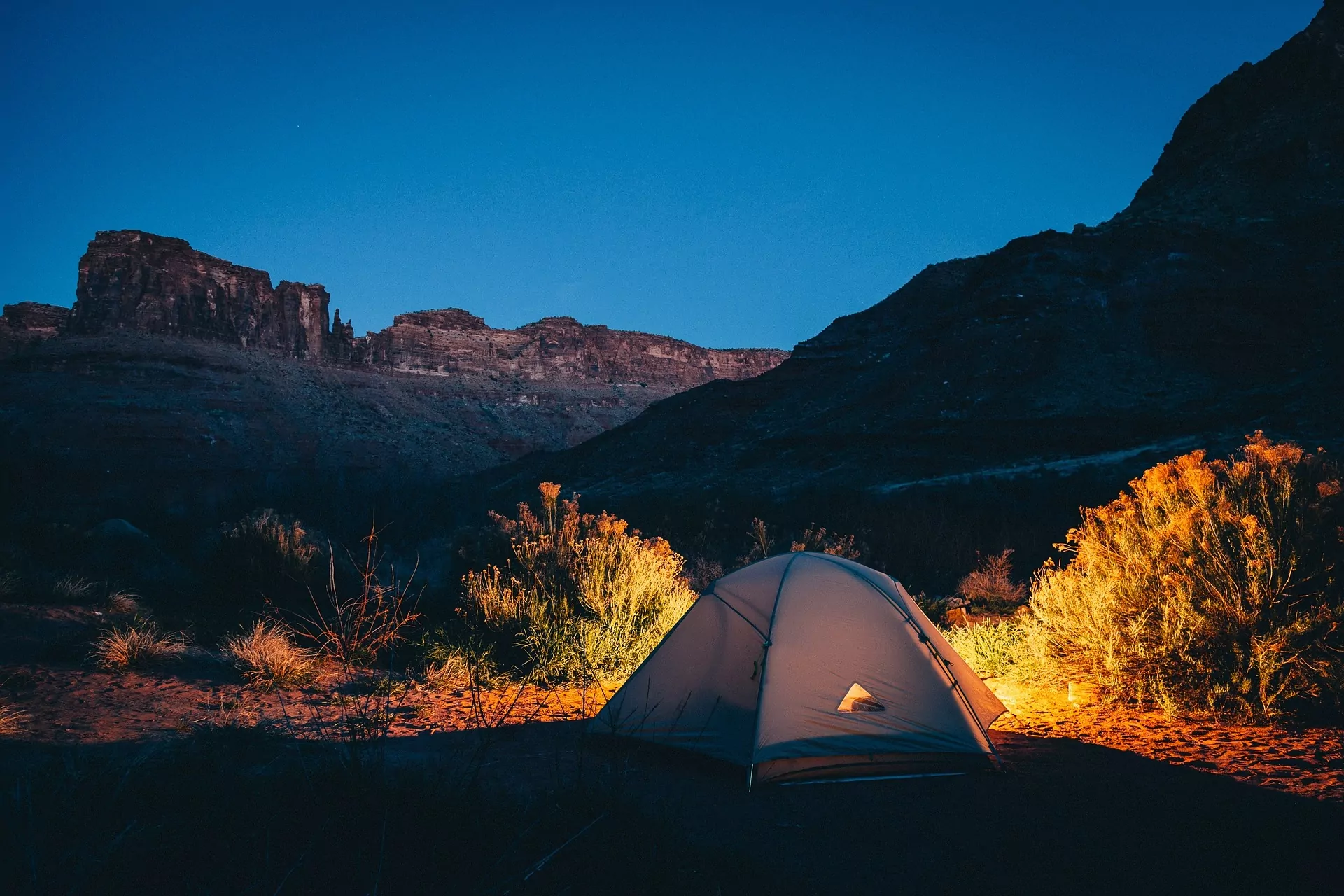
Heading out for a multi-day backpacking trip with some rain in the forecast? Let’s go over a few tips and tricks to make sure you stay as dry and happy as possible. For a complete guide to backpacking gear, review this post dedicated to preparing for a backpacking trip.
Dry Sleeping Gear
Absolutely nothing – nothing! – will make you feel better after a long rainy hike than some cozy, warm, sleeping gear. Sleeping in wet clothing is a particularly unpleasant experience that I do not recommend. Your task is, therefore, the challenge of keeping your sleeping gear dry.
My general operating procedure when guiding is as follows. I designate my sleeping clothes – be it a wool layer or t-shirt and shorts – and those clothes never ever leave my sleeping bag. When I turn in for the night, I change out of my wet hiking clothes and into the sleeping items. I then change back into my hiking clothes first thing in the morning and shove the sleeping clothes into my sleeping bag. Lastly, I pack my sleeping bag into my waterproof bag liner so it never gets wet.
Safe Campsite Selection
Stormy and rainy conditions dramatically alter campsite safety. In this case, there are two main points you want to consider when pitching your tent.
First, consider the rain-water drainage path. You’ll likely be waking up in a puddle if your tent site is nestled in a little depression or at the bottom of an incline. Always look out for small puddles when setting up. If you see pools forming where you’re thinking of pitching your tent, water isn’t draining, and you should look elsewhere. You can also consider digging a little drainage trench of your own with a stick or trowel so water doesn’t accrue around your palace.
Second, look up. Rainy and stormy conditions are often marked by an increase in wind. So look above your tent site to make sure there are no dangling branches that could fall, or entire dead trees that are leaning precariously.
The Beauty Of A Tarp
I get it; we don’t want to add extra weight to our bags if it’s not 100% necessary. However, finding room for a tarp on your next rainy backpacking trip is a powerful tool to keep you comfortable at camp.
A tarp – along with a little paracord – can be used to make a dry cooking and eating area. This is especially helpful if you’re backpacking with a group and need a place to congregate and relax after a long day on the trail. You can furthermore run a line diagonally across the underside of the tarp- and voila! You have a dry clothes-line that won’t get rained on.
This tarp is also your ticket to setting up your tent without getting a single drop of rain into your sacred, personal dry space. Set up the tarp first thing when you get into camp, and pitch your tent underneath it. Then pick up the tent and move it to your chosen site. No more rushing to set up your tent as you watch the rain seeping in before you get your rain fly secured.
The tarp can also serve as a backup to a subpar rain fly. A sad but unfortunate truth is that after days and days of constant rain, your tent’s fly – especially those that have been around the block – could seep water into your dry space (certainly not something you want to wake up to!). But having a tarp as an additional cover in this case can truly save your whole adventure.
Airing Out Hiking Clothes Overnight
Certainly one of the worst – but necessary – steps while hiking in rain is putting those damp hiking clothes back on the following morning. It’s chilly, and you’re starting the day off a little damp. However, you can take steps to dry out those clothes as much as possible overnight. Aim to minimize the dampness when you have to put them back on, and limit any nasty mold growth at the same time.
You can air out clothes on a line during the night, either under a tarp or in your tent. Heat and smoke from a fire also go a long way in drying out clothing. Bottom line, don’t wad those damp clothes up and just throw them into the foot of your tent for the night! Find more helpful drying tips in this article from Outside Magazine.
Sun Out – Dry Out
I certainly understand slipping into that hiking groove, when you’re fixed to crank out a few miles. But if that sun happens to peak out while you’re cranking, force yourself to stop! Spread out all your wet gear in the sunlight to try and get as much of it dry as possible. This includes socks, shoes/boots, pants, shirts, packs, jackets, and yourself.
Join A Guided Backpacking Adventure
Guided backpacking trips are available to a multitude of destinations, and are a stress-free, exciting way to complete your trip without worrying about the elements. The tour company handles permits, gear, transportation, meals, and provides a professional guide so you can focus 100% on enjoying your adventure. Read more…
Getting Dry

I know how tempting it is to finally take a hot shower, get the meal you’ve been craving (pizza, burger, taco or otherwise) and just slide under the blankets for the foreseeable future after hiking in rain. But wait! There’s just one thing I need you to do first. Get your gear drying.
Hang ALL Your Gear
Even if it doesn’t necessarily feel damp, assume that all your gear has gotten a little wet. So hang everything up to dry – and I mean everything. Your sleeping bag, tent, rain fly, tent footprint, bag, and clothing. Or, better yet, toss those dirty clothes straight into the wash.
Care For Your Footwear
Allow your shoes or boots to air out in a breezy spot or in the sun. Carefully inspect them for damage after they’re dry, and be prepared to give them a waterproofing treatment if you feel they need it. Backpacker Magazine has produced this excellent guide on caring for your boots if you need additional guidance.
Hold The Mold, Please
Why am I so picky about drying out all your gear immediately after hiking in rain? Mold. You’d be amazed by how quickly mold finds a foothold in your gear. If that happens, you’ll be neck-deep in a whole mire of unpleasantness. Smelly, unsightly, hard to remove, and – worst of all – waterproof ruining.
I once completed a very rainy hike in Cochamo, Chile and rolled up the gear for a quick bus ride to my next destination. Just two days later, I unfurled the gear to find that the rainfly looked like a toxic waste spill. Now, there are solutions if this happens to you. For my part, I recommend the vinegar method. Bears like a little dressing on their salads, right?
There you go hiking friends! We’ve covered the essential knowledge needed to make hiking in rain a stunning success. This includes your preparation, gear, trail safety, backpacking tips, and bringing it home by drying your gear. So get out there, and don’t let a little rain hold you back!
Have fun and stay safe, eh?
Wildland Trekking Hiking Adventures
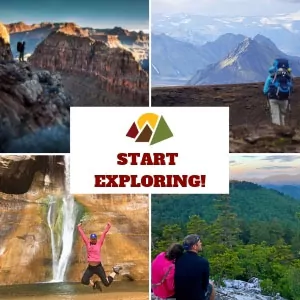
As the world’s premier hiking and trekking company, Wildland believes in connecting people to fantastic environments in amazing ways. Our day hikes, backpacking expeditions, and inn-based tours offer a multitude of hiking and trekking experiences. Wildland Trekking also offers a number of international hiking adventures from Patagonia to the European Alps.
To learn more about our guided backpacking trips and all of our award-winning hiking vacations, please visit our website or connect with one of our Adventure Consultants: 800-715-HIKE




